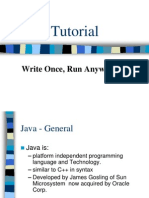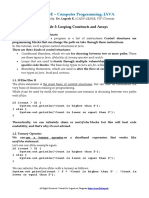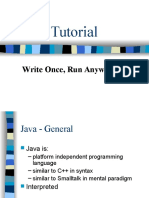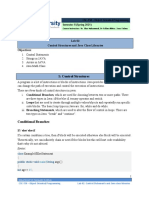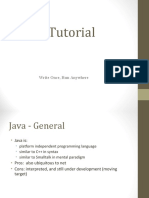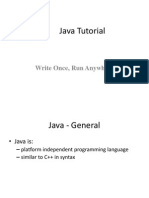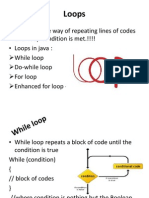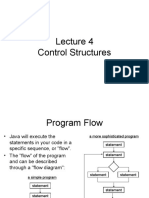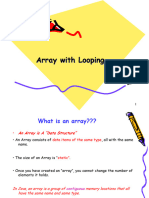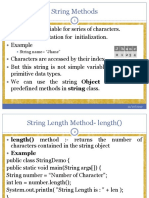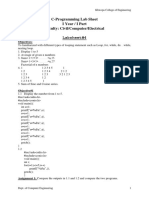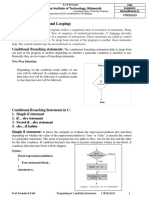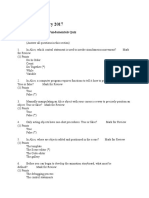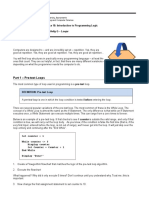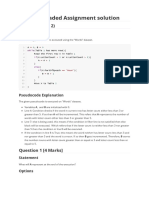0% found this document useful (0 votes)
58 views50 pagesDay 4 - Object Oriented Programming
The document discusses control structures, arrays, and methods in Java. It describes:
1) Control structures like if/else statements, switch statements, and loops (while, for, do-while) that alter the flow of a program.
2) Arrays which store a collection of values of the same type. Arrays can be declared with a size and initialized with values.
3) Methods which are code blocks that perform tasks and are reused.
Uploaded by
yosefCopyright
© © All Rights Reserved
We take content rights seriously. If you suspect this is your content, claim it here.
Available Formats
Download as PPTX, PDF, TXT or read online on Scribd
0% found this document useful (0 votes)
58 views50 pagesDay 4 - Object Oriented Programming
The document discusses control structures, arrays, and methods in Java. It describes:
1) Control structures like if/else statements, switch statements, and loops (while, for, do-while) that alter the flow of a program.
2) Arrays which store a collection of values of the same type. Arrays can be declared with a size and initialized with values.
3) Methods which are code blocks that perform tasks and are reused.
Uploaded by
yosefCopyright
© © All Rights Reserved
We take content rights seriously. If you suspect this is your content, claim it here.
Available Formats
Download as PPTX, PDF, TXT or read online on Scribd
/ 50


